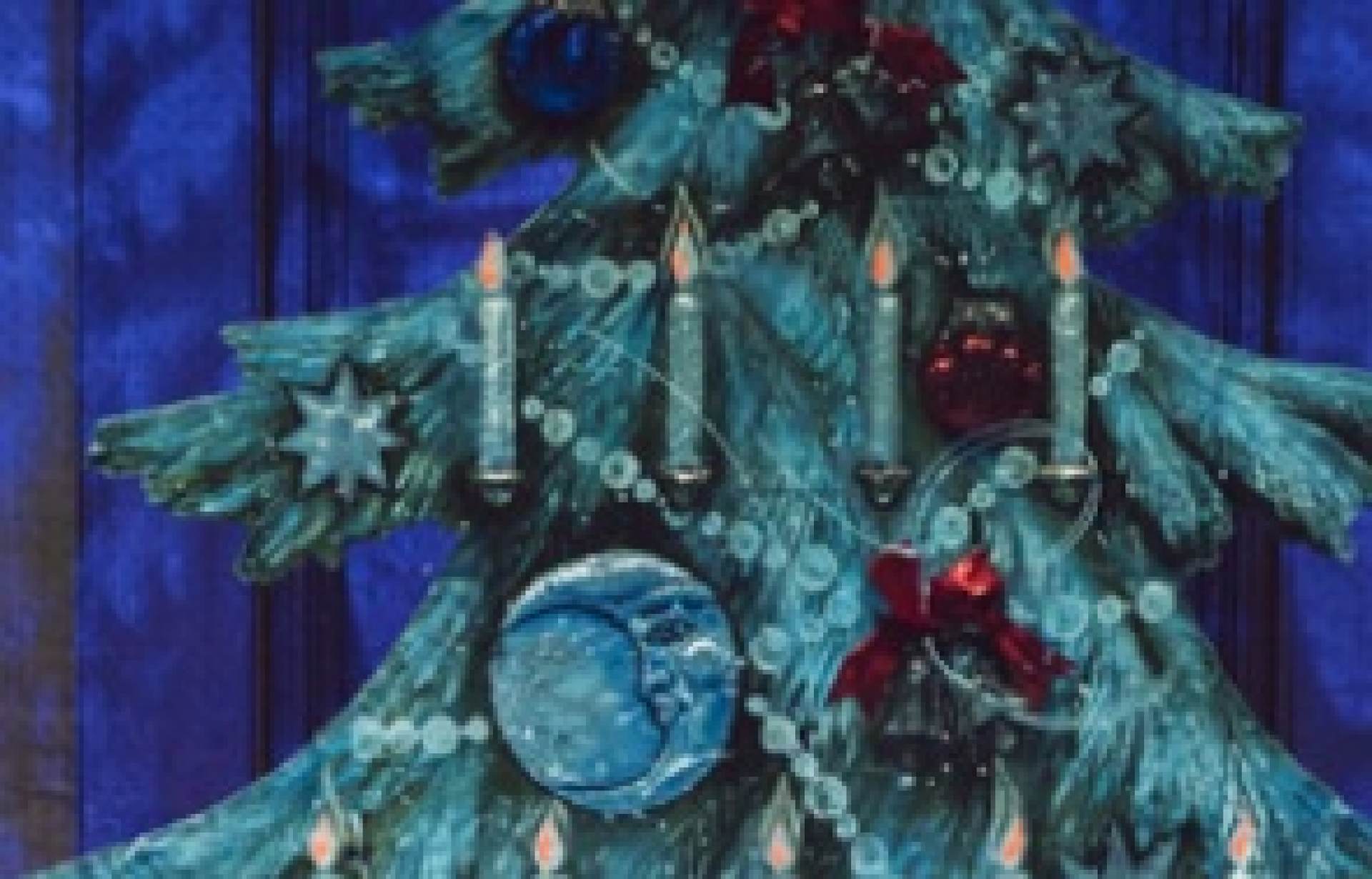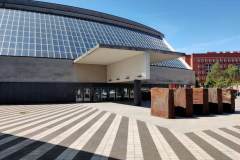The Nutcracker, Ballet
December 2024 | ||||||
|---|---|---|---|---|---|---|
Mo | Tu | We | Th | Fr | Sa | Su |
The Nutcracker by the Ukrainian Ballet Academy returns to TAM.
Plot
Below is a synopsis based on the original 1892 libretto by Marius Petipa. The story varies from production to production, though most follow the basic outline. The names of the characters also vary. In the original Hoffmann story, the young heroine is called Marie Stahlbaum and Clara (Klärchen) is her doll's name. In the adaptation by Dumas on which Petipa based his libretto, her name is Marie Silberhaus. In still other productions, such as Balanchine's, Clara is Marie Stahlbaum rather than Clara Silberhaus.
Act I
Scene 1: The Stahlbaum Home
In Nuremberg, Germany on Christmas Eve in the 1820s, a family and their friends gather in the parlor to decorate the Christmas tree in preparation for the party. Once the tree is finished, the children are summoned.
When the party begins, presents are given out to the children. When the owl-topped grandfather clock strikes eight, a mysterious figure enters the room. It is Drosselmeyer— a councilman, magician, and Clara's godfather. He is also a talented toymaker who has brought with him gifts for the children, including four lifelike dolls who dance to the delight of all. He then has them put away for safekeeping.
Clara and her brother Fritz are sad to see the dolls being taken away, but Drosselmeyer has yet another toy for them: a wooden nutcracker doll, which the other children ignore. Clara immediately takes a liking to it, but Fritz accidentally breaks it. Clara is heartbroken, but Drosselmeyer fixes the nutcracker, much to everyone's relief.
During the night, after everyone else has gone to bed, Clara returns to the parlor to check on the nutcracker. As she reaches the small bed, the clock strikes midnight and she looks up to see Drosselmeyer perched atop it. Suddenly, mice begin to fill the room and the Christmas tree begins to grow to dizzying heights. The nutcracker also grows to life size. Clara finds herself in the midst of a battle between an army of gingerbread soldiers and the mice, led by their king.
The nutcracker appears to lead the gingerbread men, who are joined by tin soldiers, and by dolls who serve as doctors to carry away the wounded. As the seven-headed Mouse King advances on the still-wounded nutcracker, Clara throws her slipper at him, distracting him long enough for the nutcracker to stab him.
Scene 2: A Pine Forest
The mice retreat and the nutcracker is transformed into a human prince. He leads Clara through the moonlit night to a pine forest in which the snowflakes dance around them, beckoning them on to his kingdom as the first act ends.
Act II
The Land of Sweets
Clara and the Prince travel to the beautiful Land of Sweets, ruled by the Sugar Plum Fairy in the Prince's place until his return. He recounts for her how he had been saved from the Mouse King by Clara and transformed back into himself. In honor of the young heroine, a celebration of sweets from around the world is produced: chocolate from Spain, coffee from Arabia, tea from China, and candy canes from Russia all dance for their amusement; Marzipan shepherdesses perform on their flutes; Mother Ginger has her children, the Polichinelles, emerge from under her enormous hoop skirt to dance; a string of beautiful flowers perform a waltz. To conclude the night, the Sugar Plum Fairy and her Cavalier perform a dance.
A final waltz is performed by all the sweets, after which the Sugar Plum Fairy ushers Clara and the Prince down from their throne. He bows to her, she kisses Clara goodbye, and leads them to a reindeer-drawn sleigh. It takes off as they wave goodbye to all the subjects who wave back.
In the original libretto, the ballet's apotheosis "represents a large beehive with flying bees, closely guarding their riches". Just like Swan Lake, there have been various alternative endings created in productions subsequent to the original.
Program and cast
Teatro degli Arcimboldi di Milano
The Teatro degli Arcimboldi is a theatre and opera house in Milan which was built over a twenty-seven month period in anticipation of the closure and subsequent nearly three-year long renovation of Milan's La Scala opera house in December 2001. It is located 4.5 miles from the city centre in an abandoned Pirelli tire factory, in an area known as Bicocca.[1]
Designed by Vittorio Gregotti working with architects Mario Botta and Elisabetta Fabbri, the fan-shaped 2,375 seat auditorium, created on two levels, was planned to allow for the continuation of La Scala's 2001/2002 opera season and it was inaugurated with a performance of Verdi's La traviata on 19 January 2002.
An unfortunate accident closed the theatre for seventeen days in February 2001, but it reopened and became the La Scala company's venue until the renovated opera house reopened on its traditional day, 7 December, in 2004.
Performances of many different types of music are still given at the Arcimboldi.

 EN
EN DE
DE IT
IT FR
FR ES
ES RU
RU JP
JP RO
RO
 Seating plan
Seating plan 

